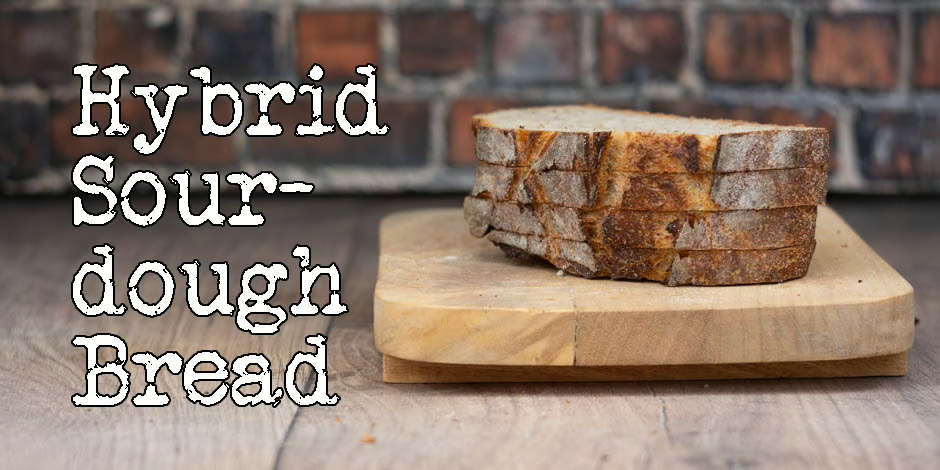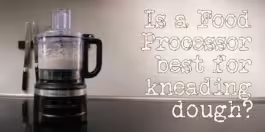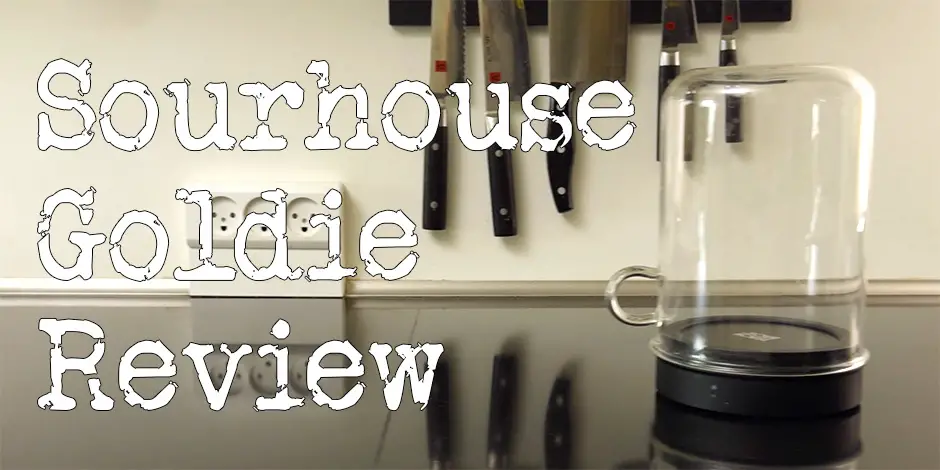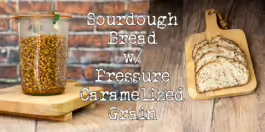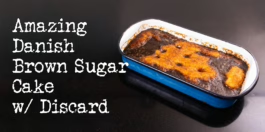Sourdough bread is known for its rich flavor and traditional fermentation process, but its unpredictability can be challenging. Adding a small amount of commercial yeast offers a hybrid solution, combining the reliability of yeast with the depth of flavor from sourdough’s slow fermentation. This is my hybrid sourdough bread recipe.
While some see this approach as practical, others argue it compromises authenticity. This article will weigh the pros and cons, helping you decide if this method is proper for your baking journey.
AD LINKS
The links for ingredients/items in this article are sometimes affiliate links,
which means I will get a commission if you purchase the product!
If you are just here for the recipe, you can press the button underneath to be automagically transported to the recipe:
Jump to Recipe Jump to VideoWhy make a hybrid bread when you can make a “real” sourdough bread?
Hybrid sourdough bread, which incorporates a small amount of commercial yeast alongside a sourdough starter, offers a practical and reliable solution for bakers of all levels. While traditional sourdough relies solely on wild yeast and bacteria for fermentation, this process can sometimes be unpredictable due to temperature, flour quality, or the health of the starter. By adding a touch of commercial yeast, bakers gain greater control over the process, ensuring consistent results without sacrificing the benefits of slow fermentation. This approach bridges the gap between convenience and quality, making it especially valuable for busy schedules or less experienced bakers.
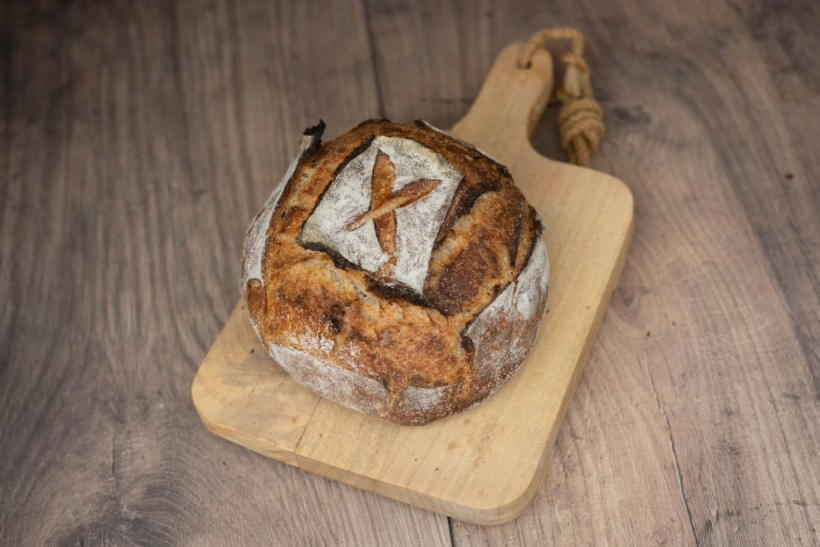
One of the most significant advantages of hybrid sourdough is its reliability. Wild yeast fermentation can be slow, especially in colder environments, resulting in sluggish rises and uneven results. Commercial yeast is added to jumpstart the process, allowing the natural yeast and bacteria to contribute flavor and texture over a longer fermentation period. This is particularly useful for bakers with an underdeveloped or inconsistent starter, ensuring that the dough ferments fully and develops a proper rise, leading to a better-structured loaf.
Do you find it hard to time your sourdough bread recipe? Hybrid to the rescue
Hybrid sourdough addresses timing challenges, fitting long-fermented bread into a manageable schedule. Natural sourdough has a prolonged, unpredictable proofing period, posing difficulties for home bakers. A pinch of commercial yeast makes fermentation more predictable and quicker, preserving flavor. Thus, hybrid sourdough offers sourdough’s benefits—enhanced flavor, nutrition, and digestibility—without rigid timing stress.
Flavor development in hybrid sourdough is another compelling reason to try. While commercial yeast can speed up the rise, the long fermentation allows the wild yeast and lactic acid bacteria to work their magic, creating complex flavors deeper than those of standard yeast-leavened bread. At the same time, the hybrid method can produce a milder sourness, which appeals to people who prefer a less tangy loaf. This balance makes hybrid sourdough versatile and approachable for various tastes.
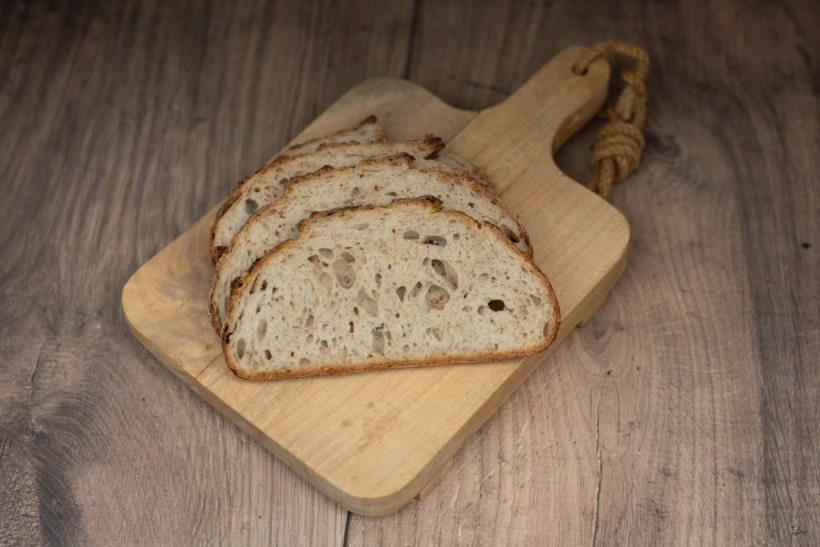
Ultimately, hybrid sourdough bread offers the best of both worlds: the tradition and flavor of natural fermentation with the predictability and convenience of commercial yeast. It is a practical solution for those facing challenges with fully natural sourdough while valuing the nutritional and taste benefits of slow fermentation. For beginners, it reduces the frustration of inconsistent results, and for experienced bakers, it provides a reliable option when time or conditions aren’t ideal. By embracing this method, bakers can enjoy exceptional sourdough bread without compromise.
The formula in this hybrid sourdough bread recipe
Vitals
| Total weight | 1400.5 grams |
| Pre-fermented flour | 9.1% |
| Hydration | 80% |
| Yield | 2 loaves |
The dough
The dough is a standard high-hydration bread with some whole-grain inclusions. The formula matches that in my master recipe but with added yeast.
It consists of mainly bread flour with whole-grain (or dark) rye flour. You can substitute with any whole-grain flour you choose, or if you want white bread, you can go for 100% bread flour. Note that the flavor of the bread comes mainly from the whole-grain component, so bread made with only bread flour will be more of a texture-only experience.
The hydration is 80%, which is relatively high, so you need strong bread flour. Choices like Caputo Manitoba Oro, King Arthur, Central Milling, and Bob’s Red Mill are great. The salt content is standard at 2% of the flour weight. If you need to eat less salt, don’t go below 1%. Personally, I think 3% is delicious. You do you.
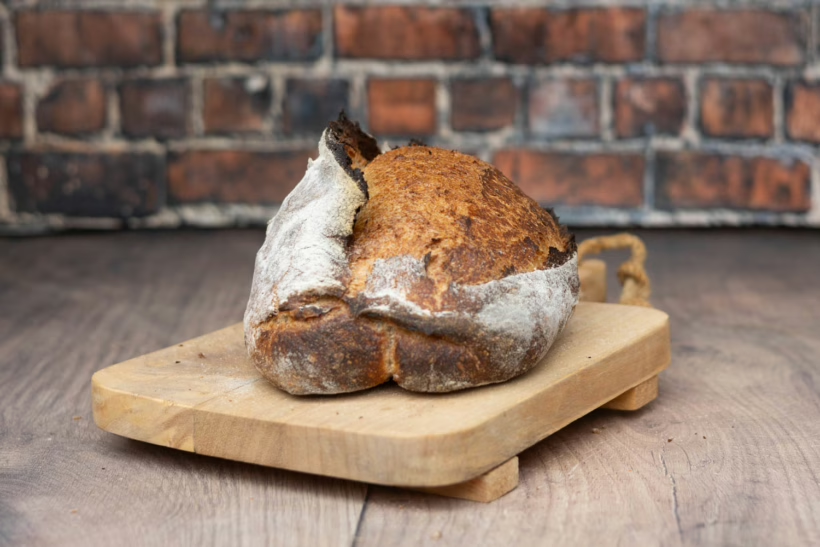
If you can’t get any of those, you may need to lower the hydration. A good rule of thumb is 70% for supermarket bread flour and 65% for all-purpose flour, but remember that not all flour is made the same.
| Weight | Ingredient | Baker's Percentage |
|---|---|---|
| 560g | bread flour | 80% |
| 140g | rye flour | 20% |
| 546g | water | 78% |
| 140g | discard (100% hydration) | 20% |
| 14g | salt | 2% |
| 0.5g | instant yeast | 0.1% |
If you want to change the formula, such as hydration, quantity, or other things, you can do that in my Bread Calculator.
What is the difference between active yeast and instant yeast
Both yeast varieties help in the same way. With active yeast, you will need to let it proof in the water before you can move on to the next step. This helps activate the yeast, which will help the bread rise. Instant yeast, however, goes straight into your dry ingredients. No proofing is needed.
In my opinion, instant yeast is much easier to use, so if you can get it, go for that.
Conclusion of this hybrid sourdough bread recipe
This hybrid sourdough bread perfectly blends tradition and practicality, resulting in a delicious and reliable loaf. By incorporating a small amount of commercial yeast, you achieve a consistent, well-risen bread with a beautiful, golden crust that crackles as it cools. The crumb remains soft, airy, and full of character thanks to the slow fermentation process that allows the flavors to develop fully. It’s the kind of bread that feels artisanal yet approachable, making every slice a joy to eat.
Not only is this bread crispy and flavorful, but it’s also incredibly wholesome. Made with simple ingredients—flour, water, salt, and yeast—it avoids the additives and preservatives often found in store-bought bread. The long fermentation process aids in breaking down gluten and phytic acid, making the bread easier to digest and improving its nutritional value. Baking it at home gives you full control over the quality of the ingredients, ensuring a healthier, cleaner loaf that you can feel good about sharing with your family.
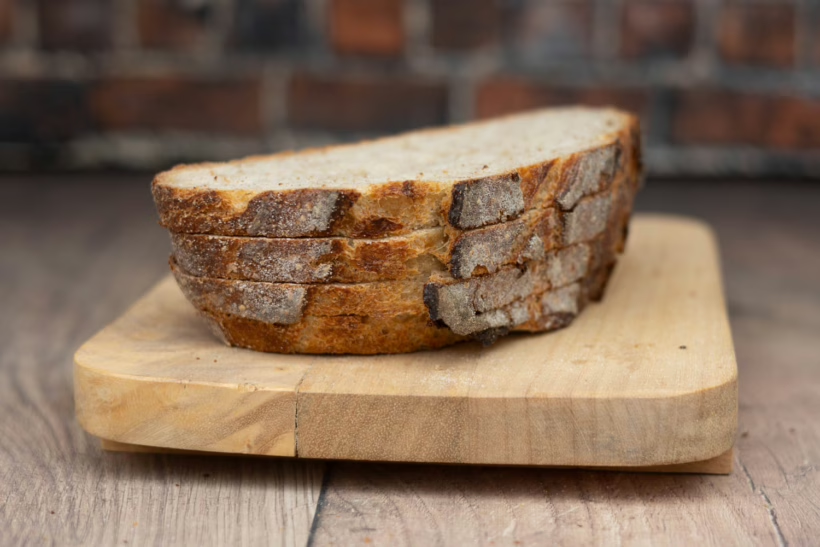
Choosing a hybrid approach over regular sourdough offers practical benefits without sacrificing quality. It removes much of the unpredictability of natural fermentation, making it easier to fit bread baking into your busy schedule while still producing a superior product. Whether you’re new to sourdough or a seasoned baker, this method guarantees a loaf that’s visually stunning, deliciously satisfying, and filled with the pride of baking your own bread. It’s proof that sometimes, a minor adjustment can make all the difference in creating the perfect homemade loaf.
Please share this hybrid sourdough bread recipe on social media
This is my hybrid sourdough bread recipe. If you like it, please consider sharing it with like-minded bread lovers on social media.
If you bake it and post it on Instagram, please tag me as @foodgeek.dk so I can see it. That would make me very happy.
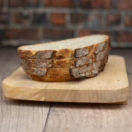
Hybrid Sourdough Bread
Equipment
Ingredients
Dough
- 560 g bread flour
- 140 g dark rye flour
- 546 g water 65%: 430g, 70%: 470g
- 140 g sourdough starter / discard
- 14 g salt
- 0.5 g instant yeast alternatively, active dry yeast
Instructions
Make dough
- To a medium bowl, add bread flour, dark rye flour, and instant yeast.
- If using active dry yeast, let it bloom for 5 minutes in a tablespoon of warm water. Add it with the water later. Mix it well.
- Add sourdough starter and water. Mix it with your hands until no dry bits are left. Use a soft scraper to make a rough ball in the bowl.
- Spray a proofing container with straight sides with baking spray and add the dough.
- Flatten the dough with a wet hand. Mark on the container where the top of the dough is and where it will have doubled.
- Let the dough rise to double. You can do it on the counter or in the fridge overnight. I will not tell you how long it takes. The dough needs to do its thing.
Shaping
- Once the dough has doubled, divide it into two equally sized pieces. Make each piece into a ball using your bench scraper by pulling the dough over the counter.
- Let them rest for 20 minutes on the counter.
- Then, final-shape them.
- To make a boule:
- Using your banch scraper, flip a dough ball over. Pull each side out and fold in over the middle. Flip the dough back over.
- Pull the dough over the counter with your scraper until the ball has a taut surface. Put it in a round banneton. You can dust it with rice flour to prevent sticking.
- To make a batard:
- Wet the counter. Using your bench scraper, flip the dough onto the water.
- Tease the dough out into a rectangle. Fold the bottom up halfway.
- Fold each side in about two-thirds. Fold the top down and tug in the sides.
- Roll up the entire dough. Tighten the seam by pulling it over the table and cover the ends with dough.
- Flip it into an oval banneton and stitch the back. Put both bannetons in the fridge until you are ready to bake.
Baking
- Turn the oven to 230°C/450°F with a dutch oven inside.
- When the oven is hot, grab a loaf from the fridge. Dust the bottom with rice flour to help it slide easily off the peel.
- Flip it onto the peel and dust the top with more rice flour for a cool look. Score the loaf.
- Take the lid off the dutch oven and put the loaf inside. Put the lid back on.
- Bake for 25 minutes. Just before the 25 minutes are up, prepare the second loaf like the first.
- Take the lid off the dutch oven and move the first loaf over. Load the second loaf into the dutch oven.
- Put the lid back on and bake for another 25 minutes. Take the first loaf out and place it on a wire rack to cool.
- Take the lid off the dutch oven and bake for 25 minutes more.
- Then, take the bread out and let it cool on a wire rack.



